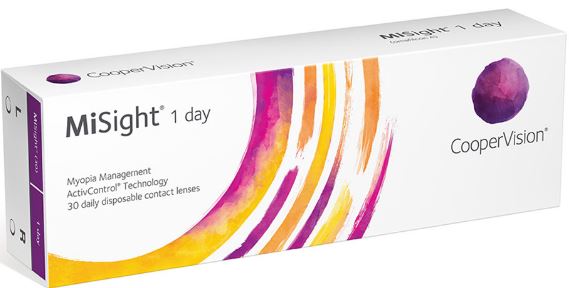Now kids 8-12 have a new option that has been show to slow the progression of myopia at the initiation of treatment.
FDA has approved the MiSight contact lens; a single use, disposable, soft contact lens that has been shown to slow myopia based on data obtained from a prospective clinical trial at four clinical sites and real-world evidence. The safety and effectiveness of MiSight was studied in a three-year randomized, controlled clinical trial of 135 children ages 8 to 12 at the start of treatment who used MiSight or a conventional soft contact lens. The trial showed that for the full three-year period, the progression in myopia of those wearing MiSight lenses was less than those wearing conventional soft contact lenses. In addition, subjects who used MiSight had less change in the axial length of the eyeball at each annual checkup.

Over the course of the trial, there were no serious ocular adverse events in either arm of the study. Additionally, to estimate the rate of vision-threatening corneal infections (i.e., corneal ulcers) among children and adolescents who wear soft contact lenses daily, the FDA reviewed real world data from a retrospective analysis of medical records of 782 children ages 8 to 12 years old from seven community eye care clinics. The results showed a rate comparable to the rate of ulcer cases among adults who wear contact lenses daily.
Myopia is common in children and tends to increase as they get older. If a person develops severe myopia as a child, they may be susceptible to other eye problems such as early cataracts or a detached retina during adulthood. The MiSight soft contact lenses are meant to be worn daily to correct nearsightedness and slow the progression of myopia in children with healthy eyes. When placed on the eye, one part of the MiSight contact lens corrects the refractive error to improve distance vision in nearsighted eyes, similar to a standard corrective lens. In addition, concentric peripheral rings in the lens focus part of the light in front of the retina (the back of the eye). This is believed to reduce the stimulus causing the progression of myopia





Comments